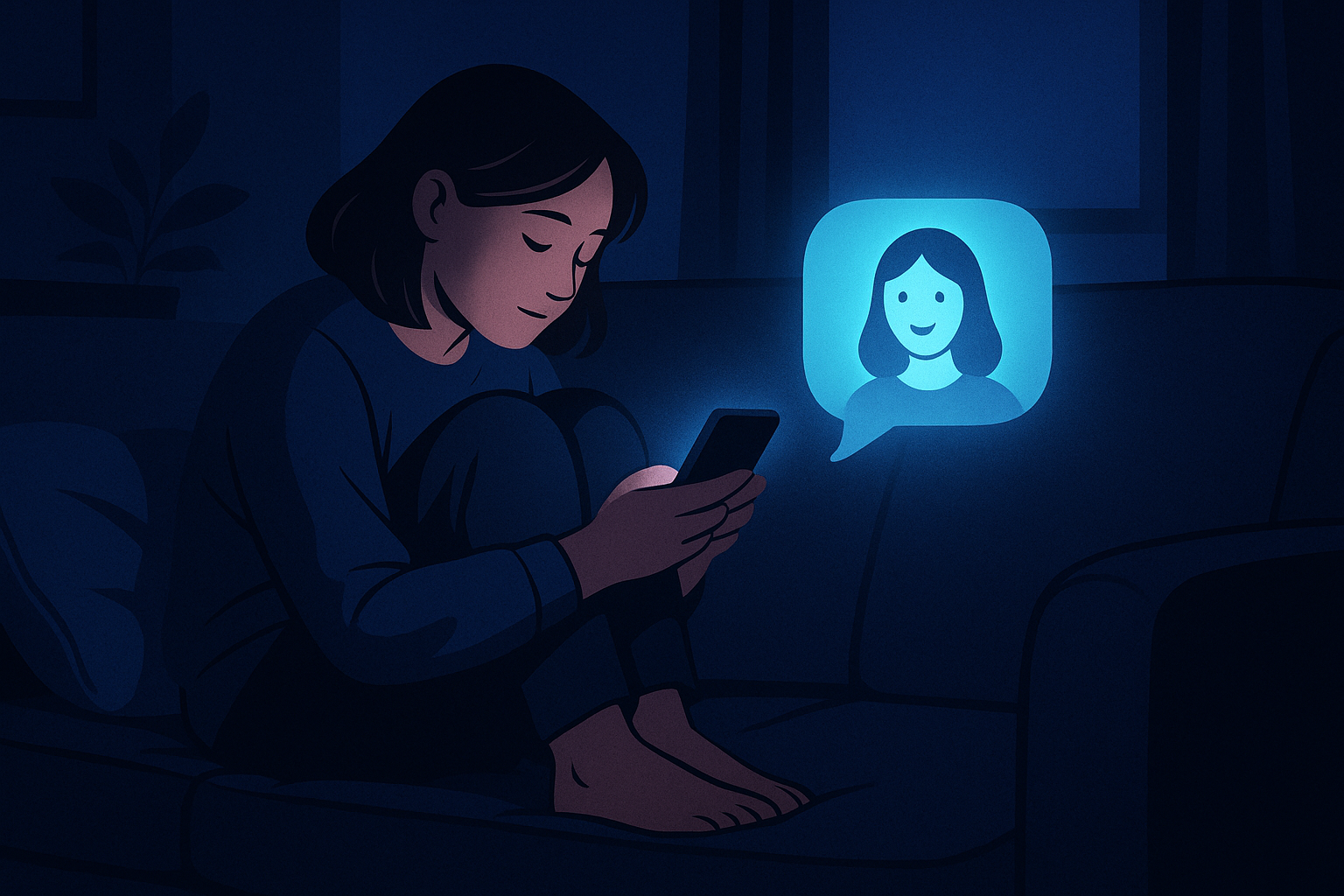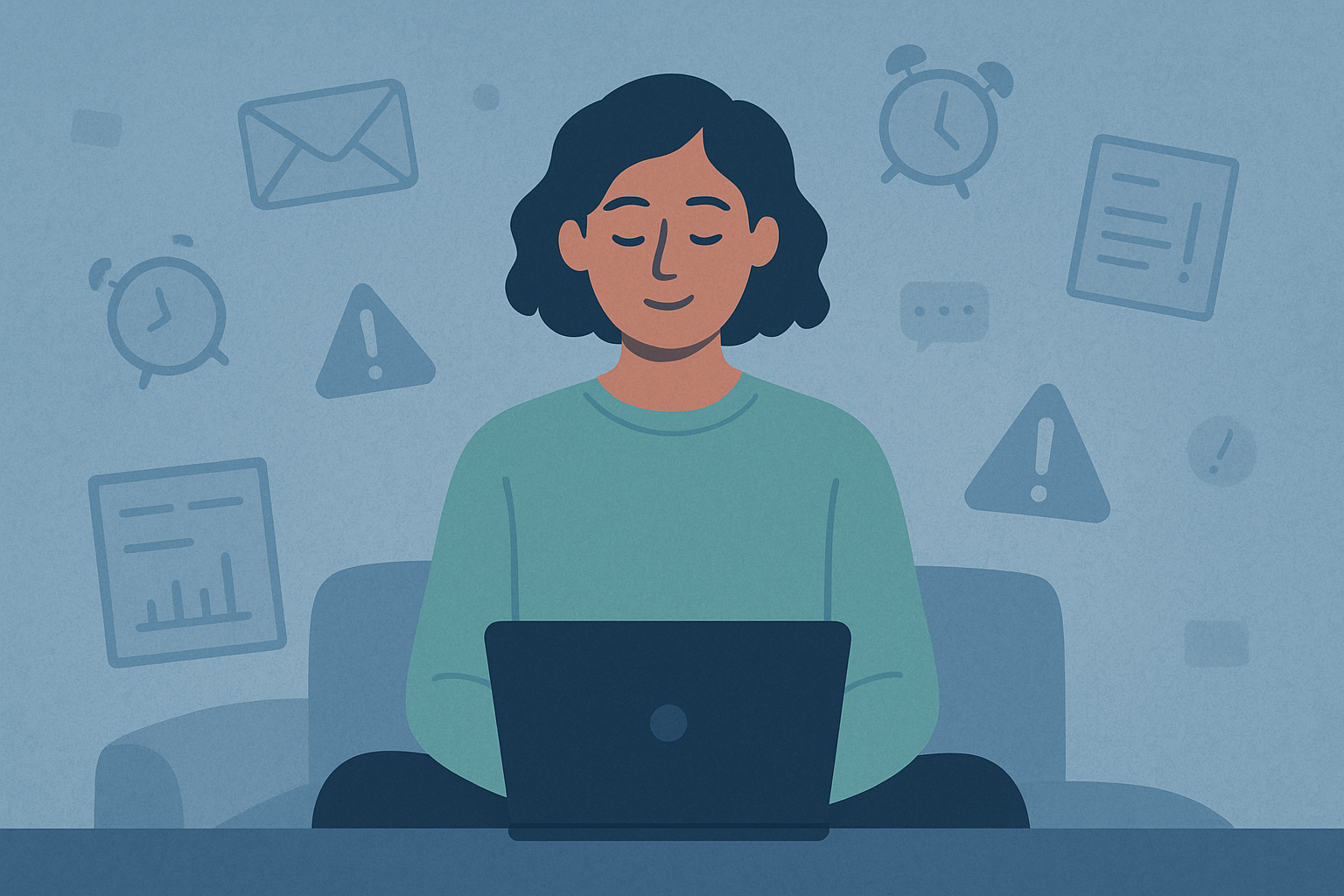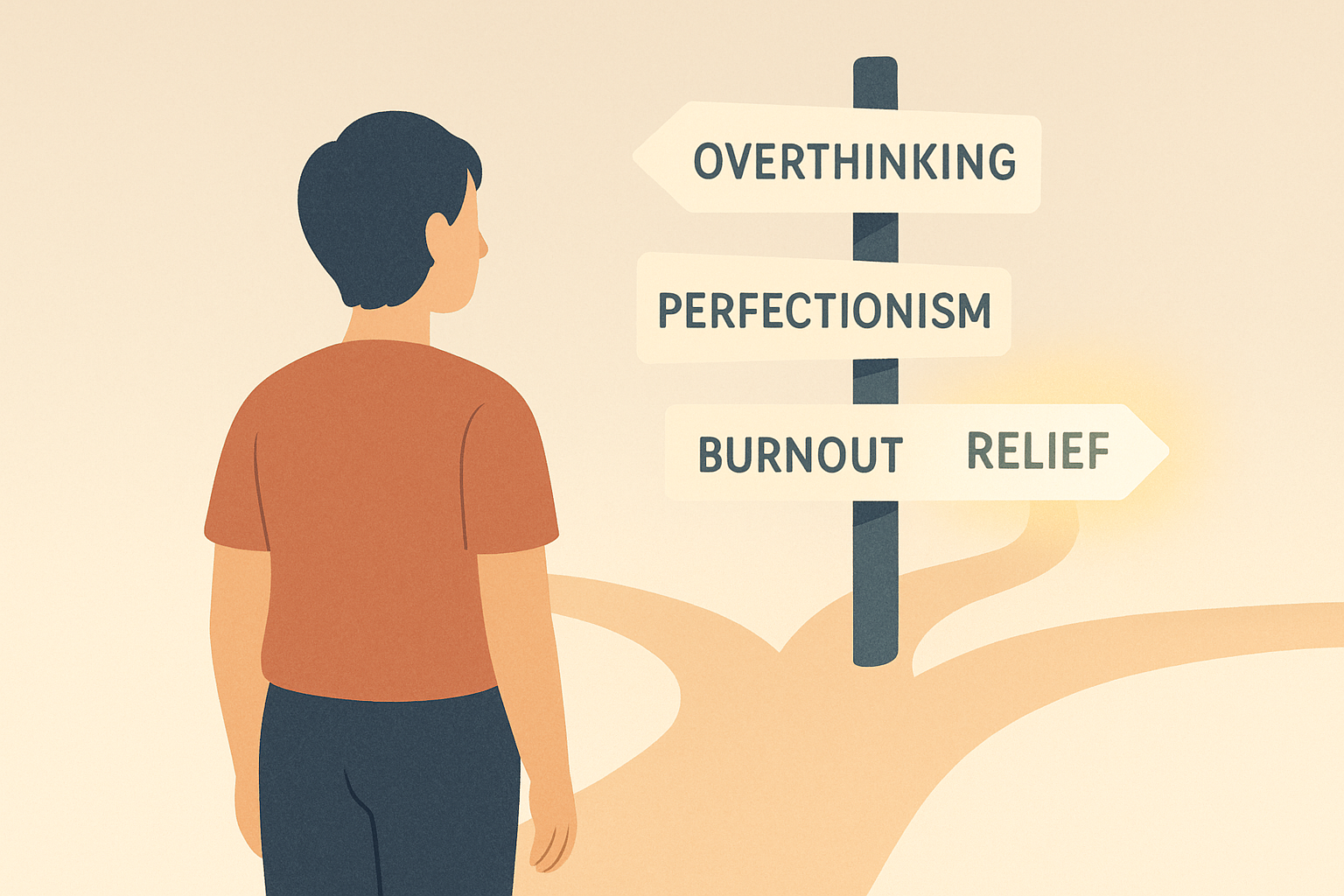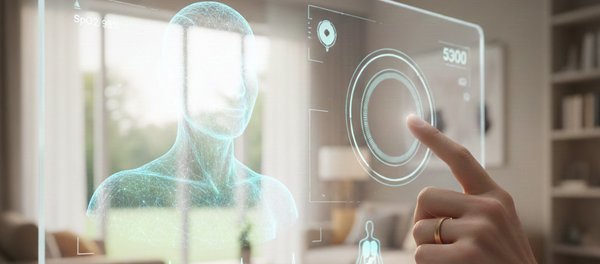How AI Therapy Supports High-Functioning Anxiety: 24/7 Help for the Quietly Overwhelmed

What is High-Functioning Anxiety?
You’re doing “fine.” In fact, most people would say you’re thriving. You hold it all together at work, keep up with your responsibilities, and maybe even get praised for being organized or dependable. But underneath the surface, you’re drowning in overthinking, self-criticism, and a constant fear of not doing enough.
This is the reality of high-functioning anxiety, a lesser-known form of anxiety that hides behind a polished exterior. Unlike generalized anxiety disorder, which may present with more visible distress, high-functioning anxiety often goes unnoticed by others and sometimes even by the person experiencing it. You might appear calm and capable, but internally, you're dealing with chronic worry, tension, or burnout.
The pressure to keep performing and maintaining appearances can make it incredibly difficult to ask for help. That’s why more people with high-functioning anxiety are turning to AI-powered mental health tools as an accessible and judgment-free way to start healing.
In this article, we’ll explore how AI therapy can be a powerful support system for people living with high-functioning anxiety. From offering immediate coping strategies to reinforcing healthier thinking patterns, AI therapy meets you exactly where you are, quietly overwhelmed, but ready to feel better.
Why Traditional Therapy Isn’t Always Accessible
For many people with high-functioning anxiety, getting help isn’t about motivation, it’s about logistics, cost, and timing.
You might recognize the need for support, but fitting therapy into a packed schedule feels impossible. Maybe you’ve looked for a therapist, only to be met with long waitlists or expensive out-of-pocket fees. Even with insurance, coverage is often limited, and mental health providers who actually get high-functioning anxiety can be hard to find.
There’s also the emotional barrier. High-functioning individuals often pride themselves on independence and performance. Asking for help can feel like failure, even when you’re close to burning out. Opening up to a stranger, booking sessions, explaining your history over and over, it can be draining before the healing even begins.
That’s why many quietly overwhelmed people never reach out at all. Not because they don’t want help, but because the traditional model of therapy isn’t built for their lives.
This is the gap that AI therapy fills. It offers support that’s:
- Instant (no appointments)
- Affordable (fraction of the cost)
- Private (no human judgment)
- Flexible (use it at 2am or during your lunch break)
AI therapy doesn’t replace human connection but it makes support accessible, especially for those who are struggling in silence.
How AI Therapy Works
AI therapy combines the structure of evidence-based mental health techniques like Cognitive Behavioral Therapy (CBT) with the power of machine learning and natural language processing. Instead of talking to a human therapist, users engage with a conversational AI trained to understand emotional language, ask meaningful questions, and guide users toward clarity and relief.
At its core, AI therapy is a guided journaling and reflection tool. When you type out your thoughts, the AI doesn’t just listen, it reflects, reframes, and gently challenges your thinking patterns. It can help you recognize unhelpful thought loops, offer CBT based coping strategies, and even remind you to breathe or take a break.
Most importantly, it’s always there. Whether it’s 3 p.m. between meetings or 2 a.m. during a spiral, AI therapy gives you a space to unload, reset, and refocus.
Here’s what makes it effective:
- Emotionally intelligent responses: AI tools like Aitherapy are trained on real therapy transcripts and guided by licensed professionals during development.
- Pattern recognition: The system can detect themes in your thoughts over time, like persistent self-doubt or people-pleasing, and help you address them.
- Behavioral nudges: AI can encourage healthy habits like gratitude journaling, boundary setting, or thought reframing.
- Anonymity: Users feel safer opening up without fear of judgment or stigma.
It’s not about replacing therapy, it’s about putting mental health support in your pocket, so you don’t have to wait until things fall apart to get help.

Why AI Therapy Helps High-Functioning Anxiety Specifically
High-functioning anxiety is a paradox. You’re always on top of things, yet constantly anxious. You achieve, but never feel “enough.” You smile, but you’re exhausted. This inner tension can go unchecked for years because, from the outside, everything looks fine. That’s exactly why AI therapy is so well-suited to help.
Here’s how it meets the unique needs of high-functioning individuals:
1. It’s private and pressure-free.
People with high-functioning anxiety often struggle to admit they’re struggling. With AI, there’s no judgment, no social pressure, and no need to appear “put together.” You can type exactly how you feel raw, messy, unfiltered.
2. It encourages reflection and emotional labeling.
AI therapy tools gently ask questions like “What made you feel that way?” or “Is this thought helpful or harmful?” These nudges help you slow down and recognize the anxious patterns you’ve been powering through for years.
3. It reinforces proven techniques like CBT.
High-functioning anxiety is fueled by unhelpful thoughts, catastrophizing, perfectionism, imposter syndrome. AI therapy tools trained in Cognitive Behavioral Therapy help identify and challenge these patterns in real time, building healthier thought habits.
4. It’s there exactly when anxiety shows up.
Anxiety doesn’t wait for a Thursday at 4pm. It hits when your inbox piles up, when you get critical feedback, or when you lie awake at night worrying. AI therapy meets you in those moments, on your terms, in your space.
5. It supports daily maintenance.
Instead of waiting for things to get bad enough to need therapy, you can use AI therapy like mental floss. A 5-minute check-in can help prevent spirals before they start.

Real-Life Use Cases and User Feedback
While the concept of AI therapy may seem futuristic, the real-world impact is happening now and it’s surprisingly human. Many users with high-functioning anxiety turn to AI therapy for its privacy, consistency, and emotional accessibility.
Let’s look at how it fits into real lives:
🧠 Case 1: “I needed support, but I didn’t want to talk to anyone.”
A marketing manager in her late 20s shared that traditional therapy felt intimidating. She didn’t want to cry in front of a stranger or explain her life story each week. With AI therapy, she was able to vent in real time, identify anxious thought spirals, and receive nonjudgmental prompts that helped her stay grounded through daily stressors.
“It’s like journaling, but smarter. Sometimes it just reflects my words back to me—and I realize I already know what I need to do.”
🔄 Case 2: “My anxiety was getting worse at night.”
A tech worker reported that their anxiety always hit hardest after midnight, long after traditional support hours ended. Instead of doomscrolling or bottling up their stress, they turned to AI therapy. Over time, these late-night sessions became part of a healthier coping routine, reducing both their physical symptoms and overthinking patterns.
“I sleep better knowing I don’t have to wait until tomorrow to talk through something.”
📉 Case 3: “It helped me notice patterns I didn’t even realize I had.”
Another user described how AI therapy’s prompts helped them connect the dots between people-pleasing behavior and their anxiety spikes. This self-awareness helped them start setting boundaries—for the first time in years.
“I didn’t expect it to be this emotionally intelligent. I feel understood, even without a person on the other end.”
These stories aren’t outliers, they’re becoming the norm. High-functioning individuals crave mental health support that meets them where they are, when they need it, and AI therapy is quietly stepping in to fill that gap.
You can find more real stories from users on our Trustpilot page, each one a reminder that you’re not alone, and that support is just a message away.
Is AI Therapy Right for You?
If you’re constantly on the go, outwardly composed, but secretly overwhelmed—you’re not alone. High-functioning anxiety can be hard to recognize and even harder to address. You may feel like your stress isn’t “bad enough” to justify therapy or that you don’t have time to deal with it.
That’s exactly why AI therapy exists.
It’s not about labeling yourself or diving into a long-term treatment plan right away. It’s about having a quiet, private space to check in with your thoughts, anytime you need it. No appointments. No explanations. Just honest reflection and gentle guidance when things feel too loud in your head.
Ask yourself:
- Do I feel anxious even when things are going well?
- Do I avoid rest because I fear being seen as lazy or falling behind?
- Do I overthink decisions or replay conversations long after they happen?
- Do I struggle to be kind to myself?
If any of these resonate, AI therapy could be a helpful companion. You don’t have to be “falling apart” to benefit. In fact, many high-functioning individuals use it as a daily mental reset, like brushing your mind, not just your teeth.
It can also complement traditional therapy, coaching, or other self-care routines. And if you’re not ready to talk to a person yet, AI gives you a place to start.

Getting Started with AI Therapy
Starting therapy can feel like a big step. But starting with AI therapy doesn’t have to be. There’s no paperwork, no awkward introductions, and no pressure to explain your entire life story in one session.
Instead, you can just open your phone or laptop, type what’s on your mind, and begin. Whether you're anxious about a meeting, spiraling over a text, or just feeling off, AI therapy gives you a space to reflect and reset on your own terms.
Here’s how to get started:
- Go to Aitherapy
- Try it for free (you get 20 free messages every day)
- Start chatting like you would with a journal or close friend
- Upgrade anytime if you want unlimited messages
No credit card upfront. Just a moment of calm waiting for you.
AI therapy won’t solve everything. But it can be a gentle first step, a daily companion, or even a long-term support system for managing high-functioning anxiety.
Quiet Support for Quiet Struggles
High-functioning anxiety can be hard to explain especially when you look like you have it all together. But you deserve support, even if no one else sees the weight you’re carrying.
AI therapy meets you in those hidden moments. It offers you a place to pause, reflect, and breathe without judgment. No appointments. No waiting rooms. Just you, your thoughts, and a tool that’s here to help.
You don’t have to wait until things fall apart to ask for support. You don’t have to keep pushing through alone.
Start talking today privately, gently, and at your own pace.





